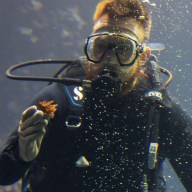This week Metro is focusing on the challenges facing Canada’s First Nations. One contributing factor in the erosion of the traditional lifestyle and therefore culture is environmental degradation on reserves. Aboriginal peoples are at particularly high risk because traditionally, they depend on local fish and wildlife for a larger part of their diet.
In the 1970s, the Grassy Narrows and White Dog reserves made headlines when large numbers of people living there were found to be suffering from mercury poisoning. This poisoning was traced to high mercury levels in waterways on the reserves, which led to high mercury levels in the fish that were consumed by residents.
Unfortunately, the experience of the Grassy Narrows and White Dog reserves residents is not unique. The construction of hydroelectric plants along the St. Lawrence River has led to PCB?contamination of the river and land along it in Ontario, Quebec, and northern New York State.
PCBs are a particular problem for people who eat local fish and wildlife because they bioaccumulate.
PCBs are not very soluble in water but are very soluble in fat. When PCBs enter a small fish’s body, rather than being excreted, they are stored in the small fish’s fatty tissues. If a larger fish eats 100 small fish, it will store all the PCBs from the 100 small fish in its fatty tissues. If we then come along and eat 10 large fish, we will then be storing the PCB from 1,000 small fish in our fatty tissues.
Breast milk contains a high percentage of fat. If a mother has PCBs stored in her fat, she will pass them along to her child in breast milk. This is what has happened at the Akwesasne Mohawk Nation. The Akwesasne people had to stop eating local fish and wildlife because of the PCB levels that were found in their bodies and in doing so, part of their culture was taken away.
These problems persist on reserves to the present day. The Aamjiwnaang First Nation Reserve near Sarnia is located in the heart of petrochemical manufacturing country. Their soil and water has been found to be contaminated with dioxins, PCBs, pesticides and metals. The Aamjiwnaang people have to put up with odours, are unable to swim or fish from their rivers and have high rates of asthma in children. Speaking of children, at the Aamjiwnaang First Nation two girls were born for every boy and it is hypothesized that endocrine disrupters were the cause of this uneven birthrate.
The Mikisew Cree and Athabasca Chipewyan First Nations in Northern Alberta are currently attempting to protect their traditional hunting and fishing grounds from environmental damage. They claim that the development of the Alberta oilsands is threatening their traditional way of life. They cite increased cases of cancer, lower water levels and a decline in the wildlife in the area. A British bank agrees with the First Nations and has donated $190,000 to the Cree to help fund a lawsuit against the Albertan and Canadian governments.
One of the major factors in environmental problems on First Nations lands is that the reserves are regulated by the federal government not by the provinces, and federal environmental regulations are weaker than those of the individual provinces. So clearly Ottawa has to step up.
– Sophia Dore is an environmental scientist with Conestoga-Rovers & Associates. Andrew Laursen is an assistant professor at Ryerson University; earthtones.metro@gmail.com.
















